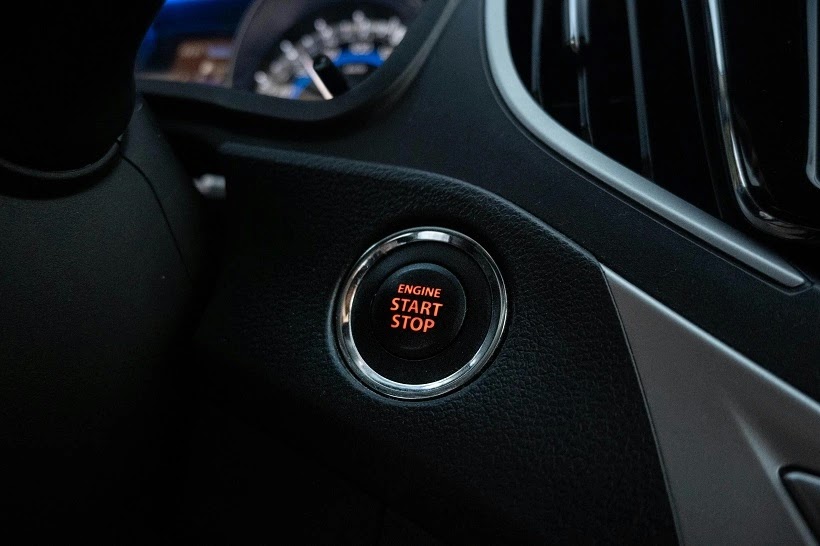When it comes to purchasing a car, many buyers face a significant decision: should they invest in a brand-new vehicle or opt for a used car? While the allure of driving a shiny, brand-new car fresh from the dealership is tempting, there are numerous advantages to considering a used car. In fact, buying a used vehicle can offer financial benefits, reduced depreciation, and lower insurance premiums, among other advantages. This article will explore 5 reasons you should consider buying a used car, and by the end, you'll have a clearer understanding of why a pre-owned vehicle might be the perfect choice for your needs.
1. Significant Cost Savings
One of the primary reasons to buy a used car is the significant cost savings. New cars lose a large portion of their value the moment they are driven off the dealership lot. In contrast, used cars have already gone through this initial phase of depreciation, allowing buyers to get a reliable vehicle for a fraction of the price.
Why the Price Difference?
• Depreciation: A new car typically loses about 20-30% of its value within the first year. After three years, the car may only be worth around 50-60% of its original price. By purchasing a used car, you can bypass this sharp decline in value.
• Lower Purchase Price: Used cars are often significantly cheaper than new ones, even if they are just a few years old. This means you can get more car for your money, or save money to spend on other important things.
• Negotiation Flexibility: Used car sellers, whether dealerships or private owners, are often more open to price negotiations than new car dealerships. This means you may be able to haggle for a better price and get the best deal possible.
Example:
Imagine you’re looking at a brand-new sedan priced at $30,000. After a year, that same vehicle could be sold for as little as $24,000. If you buy a used car that’s three years old, you could potentially pay less than $18,000 for it. This kind of savings can make a massive difference in your budget.
2. Avoid the Steep Depreciation
Depreciation is one of the largest financial hits new car buyers face. New cars lose value fast, particularly in the first few years. On the flip side, when you buy a used car, most of that steep depreciation has already occurred, meaning your vehicle retains more of its value over time.
How Does Depreciation Affect New Cars?
• Immediate Drop: As mentioned earlier, a new car can lose around 20-30% of its value the moment it’s driven off the lot. After the first year, the car's value continues to drop, though at a slower pace.
• Stabilized Depreciation: After three to five years, the depreciation rate of cars begins to stabilize. This means that if you buy a used car that’s three years old, it won’t lose its value as quickly as a new car. By purchasing at this point, you're getting a vehicle that holds onto its value better, meaning you get more for your investment when it comes time to sell or trade in the car.
Example:
Consider purchasing a 2-year-old SUV for $25,000. In two years, you might be able to sell it for $20,000. Compare this to purchasing a brand-new SUV for $40,000 that would only sell for $25,000 after the same period. By avoiding the steep depreciation of a new car, you’re essentially preserving more of your investment over time.
3. Lower Insurance Premiums
Another important reason you should consider buying a used car is lower insurance premiums. Insurance rates are primarily based on the value of the car and its replacement cost. Since used cars are generally cheaper than new cars, insurance companies charge less to insure them.
Why Insurance is Cheaper for Used Cars:
• Replacement Cost: A used car is worth less than a new car, so the insurance payout in case of theft or an accident is lower. As a result, insurance premiums are often reduced for used vehicles.
• Optional Coverages: With an older car, you may not feel the need for comprehensive or collision coverage, which can drive down your overall insurance costs. This flexibility allows you to customize your policy based on the car’s value and your budget.
• Depreciation and Insurance: Since new cars depreciate rapidly, insurance premiums for new vehicles are higher to compensate for the potential loss. Used cars, on the other hand, have already depreciated, so insurers don’t need to charge as much to cover that loss.
By choosing a used car, you could save hundreds or even thousands of dollars annually on your insurance costs, adding to the financial benefits of your purchase.
4. Access to Vehicle History Reports
With advancements in technology, buying a used car has become more transparent. Nowadays, most dealerships and private sellers provide comprehensive vehicle history reports that give you insight into the car's past. These reports can include information about previous accidents, service records, title status, and mileage.
Benefits of Vehicle History Reports:
• Transparency: You can access detailed information about any accidents, repairs, or recalls the vehicle may have had. This gives you peace of mind when buying a used car.
• Title Information: These reports will also reveal if the car has a clean title or if it has been salvaged or rebuilt after a significant incident.
• Odometer Accuracy: Fraudulent odometer readings are rare these days due to vehicle history reports, but it’s still something to be cautious about. These reports can confirm if the mileage is accurate.
• Service Records: A well-maintained car is a sign of a reliable vehicle.
Vehicle history reports often include service records, so you can see if the previous owner kept up with routine maintenance like oil changes, brake replacements, and tire rotations.
These history reports make it easier for buyers to feel confident when purchasing a used car, knowing they have access to the car’s complete background before making a decision. Services like Carfax or AutoCheck offer detailed reports that take the guesswork out of buying a used vehicle.
5. More Choices and Better Features for Your Budget
One of the biggest advantages of buying a used car is the greater variety of options available within your budget. When you buy a new car, you're limited to models that fit your price range. However, with used cars, you can explore a wider range of makes, models, and even luxury vehicles that may have been out of reach when new.
Why You Get More Value with a Used Car:
• Luxury Vehicles: If you've ever dreamed of owning a luxury car like a BMW, Audi, or Mercedes-Benz but couldn't justify the high cost of a new model, a used version could be an affordable option. Many luxury vehicles retain their high-quality performance and comfort even after several years.
• Better Features: When purchasing used, you may be able to afford a higher trim level with additional features like a sunroof, leather seats, advanced safety features, and more. These options might be too expensive in a new car but are more affordable in a used model.
• Certified Pre-Owned (CPO) Programs: Many manufacturers offer Certified Pre-Owned (CPO) programs that provide added benefits such as extended warranties, thorough inspections, and even maintenance packages. These CPO vehicles are often just a few years old and have low mileage, giving you the best of both worlds: affordability and reliability.
• More Choice: The used car market offers a vast range of vehicles to choose from. Whether you're looking for a compact car, SUV, pickup truck, or electric vehicle, you'll have many more options in the used car market than when shopping for new vehicles.
Example:
With a budget of $20,000, you could either purchase a basic new car or a fully-loaded used vehicle with premium features. The choice is yours: by opting for a used car, you get more value for your money and access to vehicles that might have been too expensive when new.
Conclusion: 5 Reasons You Should Consider Buying a Used Car
In summary, there are 5 compelling reasons you should consider buying a used car. From the financial savings and slower depreciation to lower insurance premiums and access to vehicle history reports, buying a used car is a smart choice for many buyers. Additionally, the variety of options and ability to purchase a better-equipped car for the same budget make the used car market an attractive option for many.
If you're looking for a cost-effective, reliable vehicle that retains its value and offers more bang for your buck, consider exploring the used car market. With the right research and the wealth of resources available today, buying a used car has never been easier, safer, or more rewarding.
Want more videos all about auto?
Subscribe to our YouTube channel👉Cartech Home










